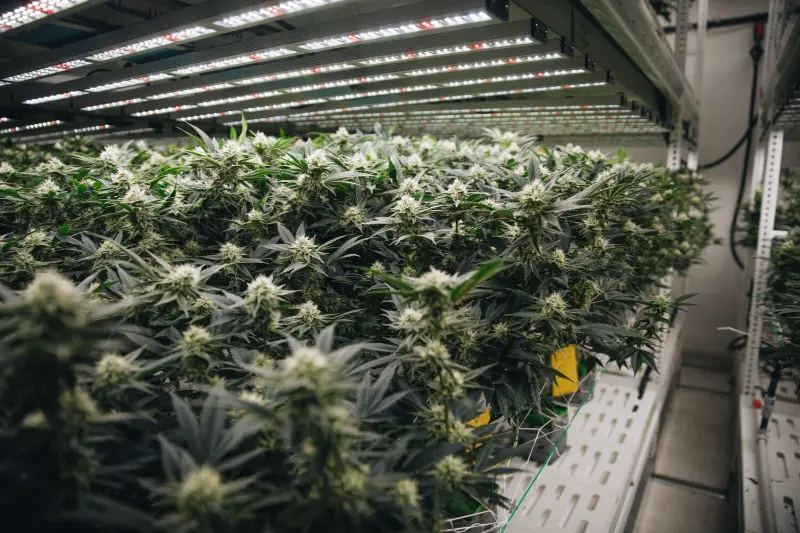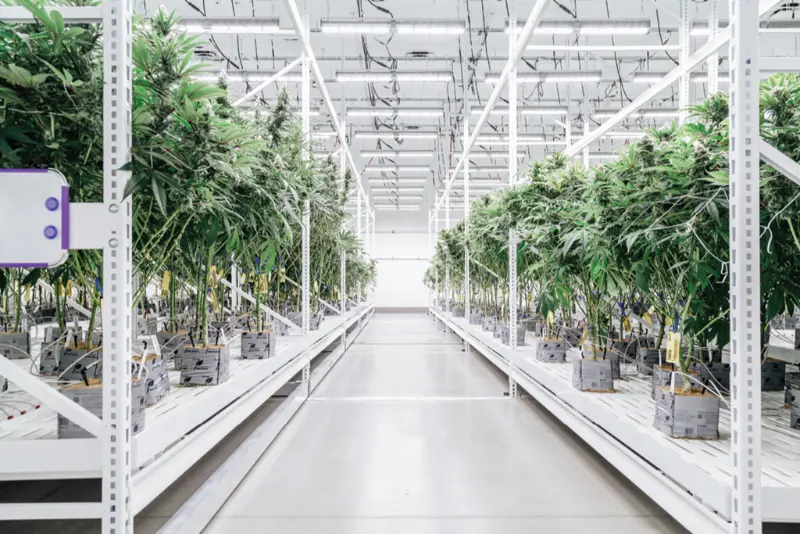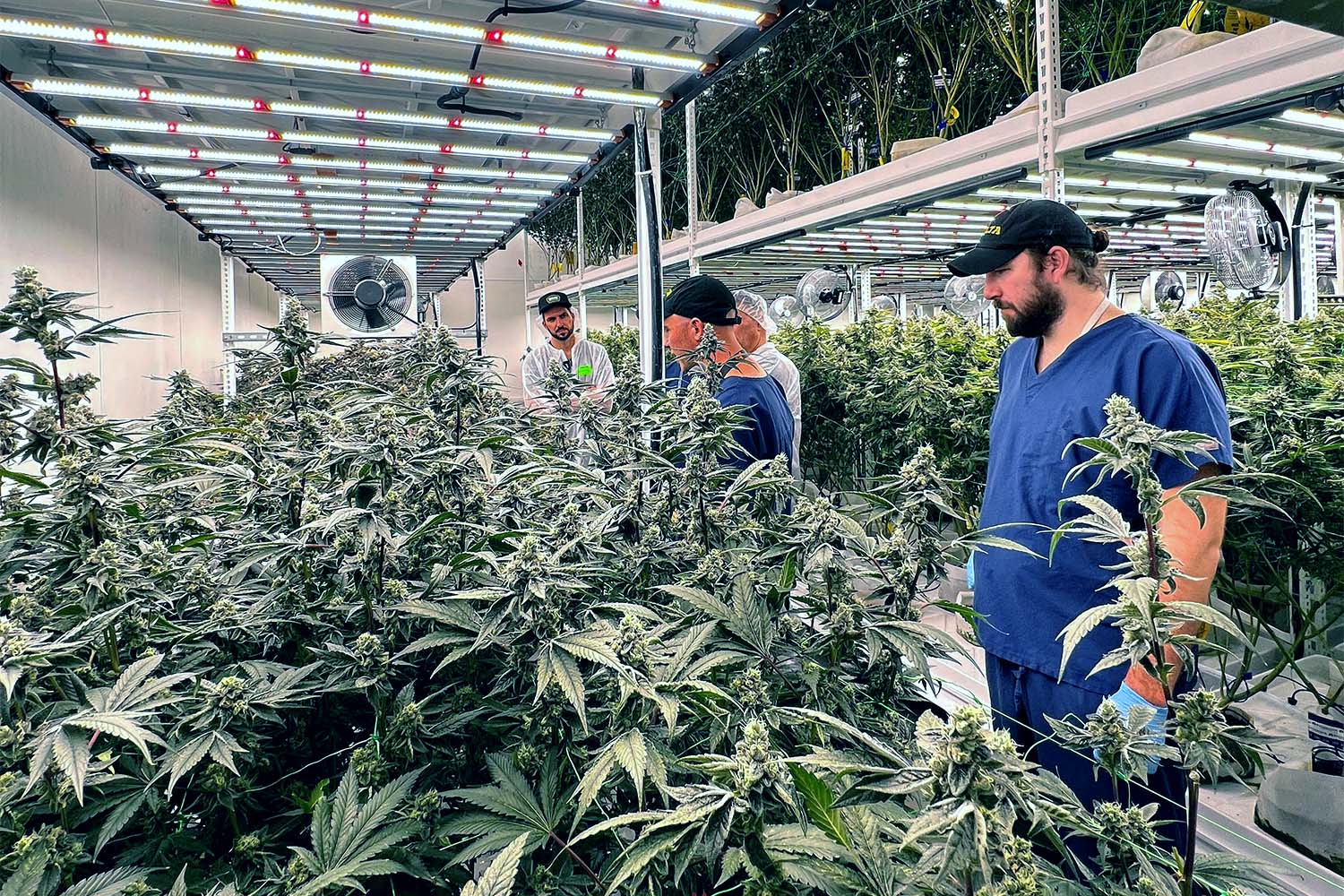Effective Tray and Drainage Strategies for Vertical Grow Rooms

Water is fundamental to your cannabis cultivation business. It follows that proper drainage is crucial to prevent oversaturation and promote healthy plant growth. In cannabis cultivation, especially within vertical farming systems, the design and implementation of an effective drainage system can significantly impact overall productivity and plant health.
Grow tray selection is integral to this process, as certain trays come equipped with grid systems to aid in proper drainage. Collaborating with a plumber skilled in vertical racking systems and grow rooms can make a substantial difference in determining the best approach for your facility.
Providing each plant with the right amount of water and nutrients is essential in any cannabis cultivation operation. In vertical farming, irrigation systems are typically automated, and a well-chosen drainage method will handle most runoff. However, the trays used should also play a role in preventing plant oversaturation. High-quality trays are designed to avoid issues like root rot or plant death due to excessive moisture. Trays with built-in or removable grid systems offer an effective solution for managing runoff, ensuring it reaches drains without causing damage to the plants.

Selecting the appropriate drainage system for your vertical farming setup can be challenging. Growers need to consider various factors, including water storage options, filtration systems, water sources, and irrigation strategies. What works for one facility may not be suitable for another, highlighting the importance of customizing your approach based on specific needs.
For those uncertain about the design process, Pipp Horticulture offers professional recommendations and connections to local service providers. Various drainage systems are available, such as slotted drainage, ejector systems, and trough drainage, each offering unique benefits depending on the specific requirements of the cultivation environment.
Not Too Much, Not Too Little
Every crop needs water to develop, meaning growers must introduce an adequate draining system to capture runoff and prevent oversaturation. Tray selection also plays a critical role in this process, as some are fitted with grid systems to aid in proper drainage. Working with a plumber skilled in vertical racking systems and grow rooms can make a considerable difference when determining the best approach.
Tray Selection
Providing each plant with the perfect amount of water and nutrients is an essential operation of any cannabis facility. In vertical farming, this process is generally automated via some form of irrigation system. Your chosen drainage method will handle most runoff, but trays should also help protect plants from oversaturation.
The best trays are designed to aid in preventing issues like root rot or plant death due to excessive moisture. Options with built-in or removable grid systems provide an outlet for runoff to reach drains effectively and freely.
Moreover, opt for durable grow trays built to withstand high humidity levels and hefty substrates. Growing media like Rockwool and Coco Coir can be heavy when fully saturated with solution, so girth is an important property to consider.
Pipp Hort offers a range of grow trays expertly crafted with cannabis cultivators in mind. We recognize the need for reliability throughout the entire growth cycle, from seedling to flowering.
As Williamson explains, “Other trays on the market may yellow, crack, or break over time. We make sure everything we develop in-house is made for the long haul… This isn’t our first rodeo–[our products] allow for seamless integration and maximize all of your footprint.”
Below are four Pipp tray options to consider:
- Combination grow tray with optional HDPE inserts: These trays are made-to-order and optimized for Drip-to-Drain or Ebb-and-Flow systems. When desired, HDPE inserts can be installed to improve drainage.
- Drip-to-Drain Grow Tray with optional HDPE inserts: Akin to Combination trays, the Drip-to-Drain options are compatible with HDPE inserts for optimized drainage. Each tray features an aluminum base to prevent corrosion, while HDPE grids guard against pesky mold and mildew.
- Airflow Grow Trays: This sectional tray was designed to eliminate airflow restrictions in a vertical farming system. Trays are perfect for Drip-to-Drain and suitable for any growing substrate, particularly Rockwool.
- ABS Grow Tray: The ABS tray is Pipp’s lower-cost option constructed from durable plastic and equipped with built-in slopes. Like our other trays, the ABS provides UV stability alongside antimicrobial and antifungal properties.
Types of Drainage System
Selecting a drainage system may seem like a challenging feat. Growers must consider water storage options (e.g., tanks or reservoirs), filtration systems, water sources, and irrigation strategies. What works in one facility may not function appropriately in another, so remember this as you weigh different options.
Cultivators concerned about the design process can contact Pipp for a vetted professional recommendation. Our team has worked with countless experts, and we’re happy to connect you with a local service provider.
Below are examples of drainage systems for vertical farming systems:
- Slotted drainage: Some vertical farms install drains perpendicularly below rack systems. Runoff simply empties into an on-site reservoir or tank for an easy drainage solution.
- Ejector system: With this drainage system, water funnels into a catch before being ejected up and out into a reservoir.
- Trough drainage: With this approach, excess water funnels into a trough via pipes attached to carriages before exiting into a reservoir.
Conclusion
Effective water management is the cornerstone of a successful vertical cannabis cultivation operation. Proper tray selection and drainage systems play a vital role in maintaining plant health and preventing issues such as root rot and oversaturation. By utilizing high-quality trays equipped with grid systems and partnering with experienced professionals, growers can ensure that their irrigation and drainage processes are optimized for maximum efficiency.
Pipp Horticulture’s range of grow trays and tailored drainage solutions provide cultivators with the tools needed to achieve reliable and consistent results. The durability and design of these trays help protect plants throughout their growth cycle, while the various drainage options available can be customized to meet the specific needs of each facility.
Selecting the right drainage system involves considering several factors, including water storage, filtration, and irrigation strategies. It’s essential to choose a system that aligns with your facility’s unique requirements to ensure smooth operations and prevent potential water management issues. We offer expert guidance and connections to local service providers, helping growers navigate the complexities of the design process.
By focusing on the details of water management and collaborating with knowledgeable professionals, you can enhance plant health, improve productivity, and ensure the long-term sustainability of your cultivation operation.

